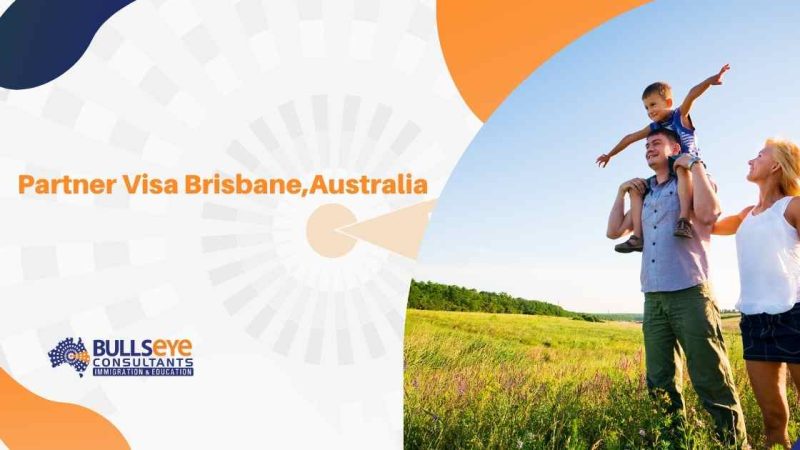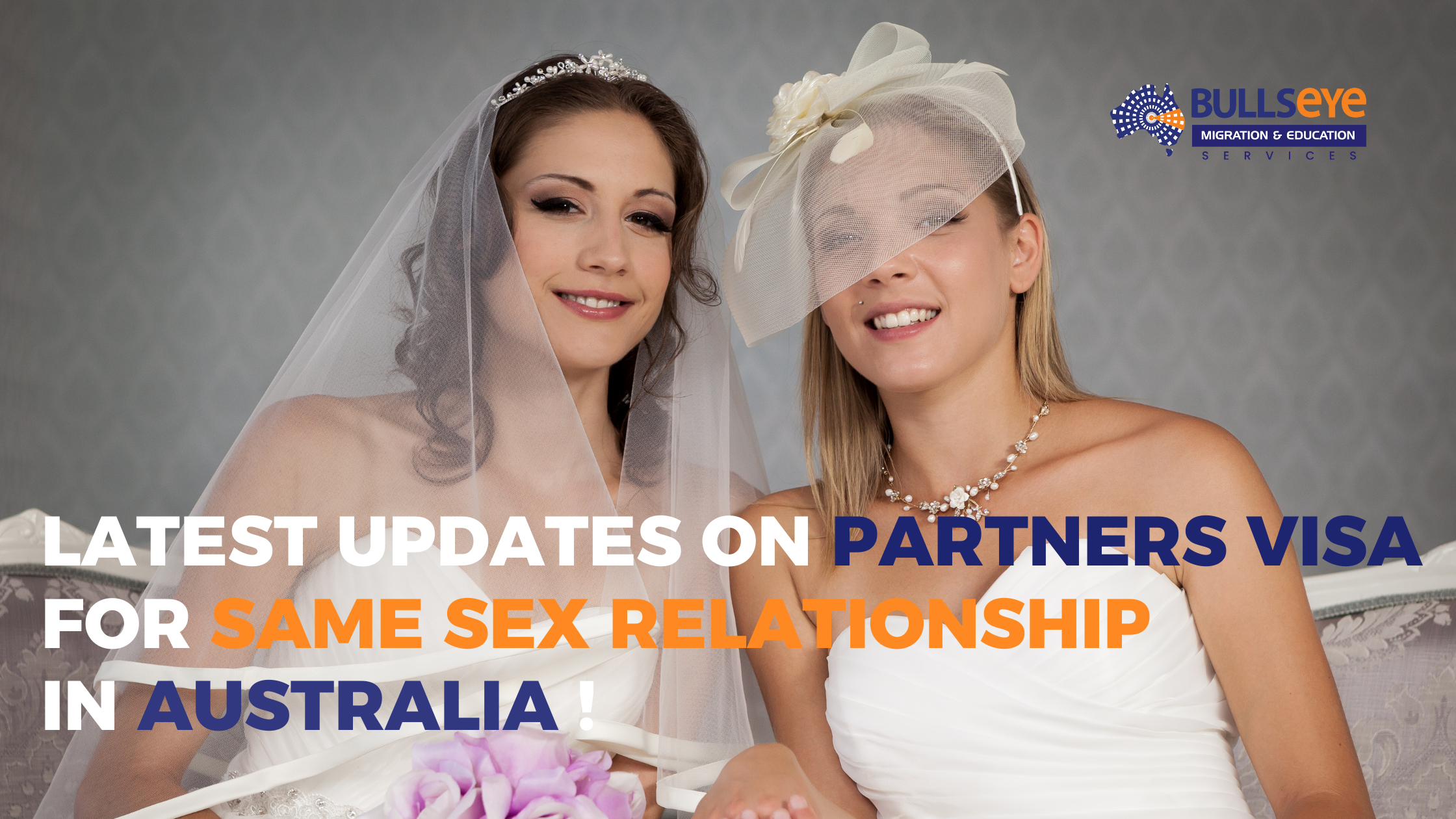Partner Visa
Under the Partner Visa stream, a candidate can be supported by their Australian partner, who must be an Australian citizen, permanent resident, or eligible New Zealand resident, and at least 18 years old.
Partner Visa Australia



Types of Partner Visas
Onshore Partner Visa (Subclass 820/801) :
For applicants living in Australia.
- Subclass 820 is the temporary visa stage, allowing the applicant to live in Australia while the permanent visa is processed.
- Subclass 801 is the permanent visa, granted after proving the relationship is genuine and ongoing, usually two years after the initial application.
Offshore Partner Visa (Subclass 309/100) :
For applicants living outside Australia.
- Subclass 309 is the temporary visa stage.
- Subclass 100 is the permanent visa stage, granted after the relationship is confirmed as genuine and continuing.
Prospective Marriage Visa (Subclass 300):
Allows the applicant to enter Australia to marry their partner (sponsor) within nine months. After marriage, the applicant can apply for the partner visa onshore.

Application Process
- Applications are usually lodged online through the Department of Home Affairs Immi Account portal.
- Both temporary and permanent visa stages are applied together as a combined application.
- Applicants must provide extensive evidence of a genuine and ongoing relationship, including shared financial responsibilities, joint living arrangements, social aspects of the relationship, and mutual commitment.
- Sponsors must be Australian citizens, permanent residents, or eligible New Zealand citizens and provide support via a sponsorship form.
- Health checks and police clearances are required for applicant eligibility.
Processing Times
- Temporary partner visas processing takes about 12 to 26 months.
- Permanent partner visa processing takes about 11 to 30 months after the temporary visa is granted.
- Timeframes may vary based on the completeness of the application and individual circumstances.
Four Aspects of Relationship Assessment
When assessing a de facto relationship or spouse status for migration purposes four relationship aspects are assessed by department:
- Financial Aspect: Sharing of financial responsibilities, joint assets, or financial interdependence.
- Nature of Household: Whether the couple lives together and shares household duties.
- Social Aspect: Public recognition of the relationship, including social activities and community involvement as a couple.
- Commitment to Each Other: The extent of mutual emotional support and long-term commitment.
Spouse Definition
A person is considered a spouse if they:
- Are legally married to each other under a valid marriage recognized by Australian law.
- Have a mutual commitment to a shared life as a married couple to the exclusion of all others.
- Maintain a genuine and ongoing relationship.
- Live together, or if living apart, are not permanently separated
De facto Relationship Definition
A person is in a de facto relationship if they:
- Are not married to each other but are in a genuine and continuing relationship.
- Have a mutual commitment to a shared life to the exclusion of all others.
- Live together, or if living apart, are not permanently separated.
- Are not related by family; that is, they are not a child, descendant, or sibling by birth or adoption.
Criteria for De facto Relationship
- Both parties must be at least 18 years old.
- The couple must have lived together continuously for at least 12 months prior to application, unless exempted.
- Exemptions or waivers to the 12-month rule may apply in compelling and compassionate circumstances, or the relationship is registered under state or territory laws.
Subclass 820 and Subclass 801 (Onshore Partner Visa)
The Subclass 820 and 801 Partner Visas provide a pathway for partners of Australian citizens, permanent residents, or eligible New Zealand citizens to live in Australia. These visas are sequential that is Subclass 820 is temporary and Subclass 801 is permanent.
Application Process and Forms
- Combined Application: Applicants apply for both Subclass 820 (temporary) and Subclass 801 (permanent) visas simultaneously with a single application.
- Approved Forms: Form 47SP is the primary visa application form submitted online.
- Physical Location: The applicant must be physically present in Australia at the time of application, except certain exemptions apply (e.g., holders of specific provisional visas who may apply from outside Australia under Ministerial discretion).
- Application Fees: The Subclass 820 visa itself carries no direct application fee; fees are incorporated in the combined fee for both 820 and 801 visas.
Eligibility Criteria
- Relationship Status : The applicant must be the spouse or de facto partner of the sponsoring Australian citizen, permanent resident, or eligible New Zealand citizen. This includes those who intend to marry their Australian partner.
- Genuine Relationship : The relationship must be genuine, ongoing, and exclusive. This is assessed through evidence covering financial arrangements, social aspects, household living, and mutual commitment.
- Sponsorship:
- The sponsor must be eligible and not prohibited from sponsoring.
- Sponsors must declare any relevant criminal convictions for assessment.
- Previous Visa Conditions :
- Applicants holding substantive visas such as Subclass 475, 487, 489 must have held these visas for at least two years and complied with visa conditions before applying.
- Subclass 491 or 494 visa holders must have held the visa for at least three years.
- No Recent Visa Refusals : The applicant should not have had certain partner visa refusals (Subclass 100, 309, 801, or 820) within 21 days immediately before the application.
Criteria at Time of Decision
- Ongoing Relationship: At visa decision time, the relationship must be ongoing and genuine. The applicant must still be the partner of the sponsor.
- Family Violence Exception: If the relationship has ceased due to family violence experienced by the applicant or dependent children, visa grant may still be approved.
- Sponsor’s Death: If the sponsor has died, the applicant may still be granted the visa if they can demonstrate the relationship would have realistically continued.
Important Conditions and Requirements
- Compliance with Visa Conditions: Applicants must have substantially complied with visa conditions attached to any prior substantive visas before applying.
- Statements and Evidence:
- Applicants must provide statutory declarations (Form 888) from Australian citizens, permanent residents, or eligible New Zealand citizens supporting the genuineness of the relationship.
- A completed Form 40SP by the sponsor is mandatory.
- Bridging Visa: On applying, applicants who hold another valid visa are granted Bridging Visa.
Key Timelines
- The Subclass 820 visa grants temporary residence and allows the applicant to remain in Australia while the Subclass 801 visa is processed.
- The Subclass 801 visa is usually granted two years after the initial application at the discretion of the Department, subject to relationship continuation and eligibility.
- Exceptions to the two-year rule may apply for long-term relationships with dependent children or via Ministerial discretion.
Subclass 309 and Subclass 100 (Offshore Partner Visa)
The Subclass 309 and 100 visas together provide a pathway for partners of Australian citizens, permanent residents, or eligible New Zealand citizens to live in Australia through a two-stage process: a temporary visa (309) followed by a permanent visa (100).
Application Requirements and Process
- Forms: Applications must be lodged on the approved form 47SP online.
- Location: Applicants must be outside Australia at the time of lodging the Subclass 309 visa application.
- Joint Application: Subclass 309 and 100 visas are applied together.
Eligibility Criteria for Subclass 309
- Relationship Status : The applicant must be the spouse or de facto partner of an Australian citizen, permanent resident, or eligible New Zealand citizen.
- Genuine Relationship : The relationship must be genuine, ongoing, and exclusive. This is assessed through evidence covering financial arrangements, social aspects, household living, and mutual commitment.
- Sponsorship :
- Sponsorship must come from the Australian citizen, permanent resident, or eligible New Zealand citizen partner or intended partner.
- If the sponsor is under 18, their parent or guardian must sponsor.
- Sponsors must disclose any relevant criminal history before sponsorship approval.
Time of Decision Requirements
- The relationship must still be continuing at the time of decision for visa grant.
- For intended spouses, marriage must have taken place before visa grant unless special circumstances apply.
- Exceptions allow visas to be granted if the sponsoring partner has died or the relationship ceased due to family violence.
Validity and Visa Conditions
- The Subclass 309 visa is temporary and permits the applicant to live in Australia while awaiting the permanent Subclass 100 visa.
- The applicant may be inside or outside Australia at the time of visa grant (not in immigration clearance).
- Visa conditions may include restrictions such as condition 8502 (entry restriction before a specified date) and condition 8515 (restriction on relationships or marriage before entry).
- The Subclass 100 visa is typically granted two years after the Subclass 309 application date.
- The Minister may waive the two-year relationship requirement in cases such as long-term relationships with dependent children or compassionate grounds.
Important Conditions and Requirements
- The applicant must continue to be the spouse or de facto partner of the sponsor unless exceptions apply.
- Statements and Evidence:
- Applicants must provide statutory declarations (Form 888) from Australian citizens, permanent residents, or eligible New Zealand citizens supporting the genuineness of the relationship.
- A completed Form 40SP by the sponsor is mandatory.
Prospective Marriage Visa (Subclass 300)
The Subclass 300 visa allows a person outside Australia who intends to marry their Australian citizen, permanent resident, or eligible New Zealand citizen partner to enter Australia to marry and then apply for a partner visa.
Application Requirements
- Form: The approved application form is Form 47SP which is submitted online.
- Location: Applicants must be outside Australia when applying.
Key Eligibility Criteria
- The visa applicant must intend to marry a prospective spouse who is an Australian citizen, permanent resident, or an eligible New Zealand citizen.
- Both parties must have met and know each other personally since turning 18.
- Genuine intention to marry and live together as spouses must be demonstrated.
- The marriage must take place within the visa validity period (at least 9 but no more than 15 months from grant).
- Sponsorship approval by the prospective spouse must be current and valid at the time of decision.
- The prospective spouse cannot be a prohibited sponsor.
Visa Validity and Conditions
- The visa is temporary and permits travel to, entry, and residence in Australia until a specified date set by the Minister (generally between 9 and 15 months from grant).
- First entry must be made before the date specified in the visa grant.
- Certain visa conditions may be applied, including:
- Condition 8515, restricting the applicant from entering a de facto relationship or marrying anyone other than the prospective spouse before entering Australia.
- Condition 8502, which may prohibit entry before a specified date.
Have Queries On Partner Visa ?
Get personalised immigration advice from our expert migration agent in Brisbane to migrate to Australia. Consult us.

Partner Visa
(subclass 820 and 801)
Partner Provisional Visa
(Subclass 309)
Partner Migrant Visa
(Subclass 100)
Latest News & Updates
Stay up to date with the latest from the Bullseye Consultants

Partners Visa For Same-Sex Relationship In Australia
January 12, 2022
As same-sex marriage is lawfully acknowledged throughout Australia, it is likely to apply for a partner visa founded on marital

Everything about changes in Partner visa and sponsorship obligation changes 2020
July 16, 2020
Overview The Australian sponsorship obligation and law for partner visa applications are changing. You must lodge the partner visa application




